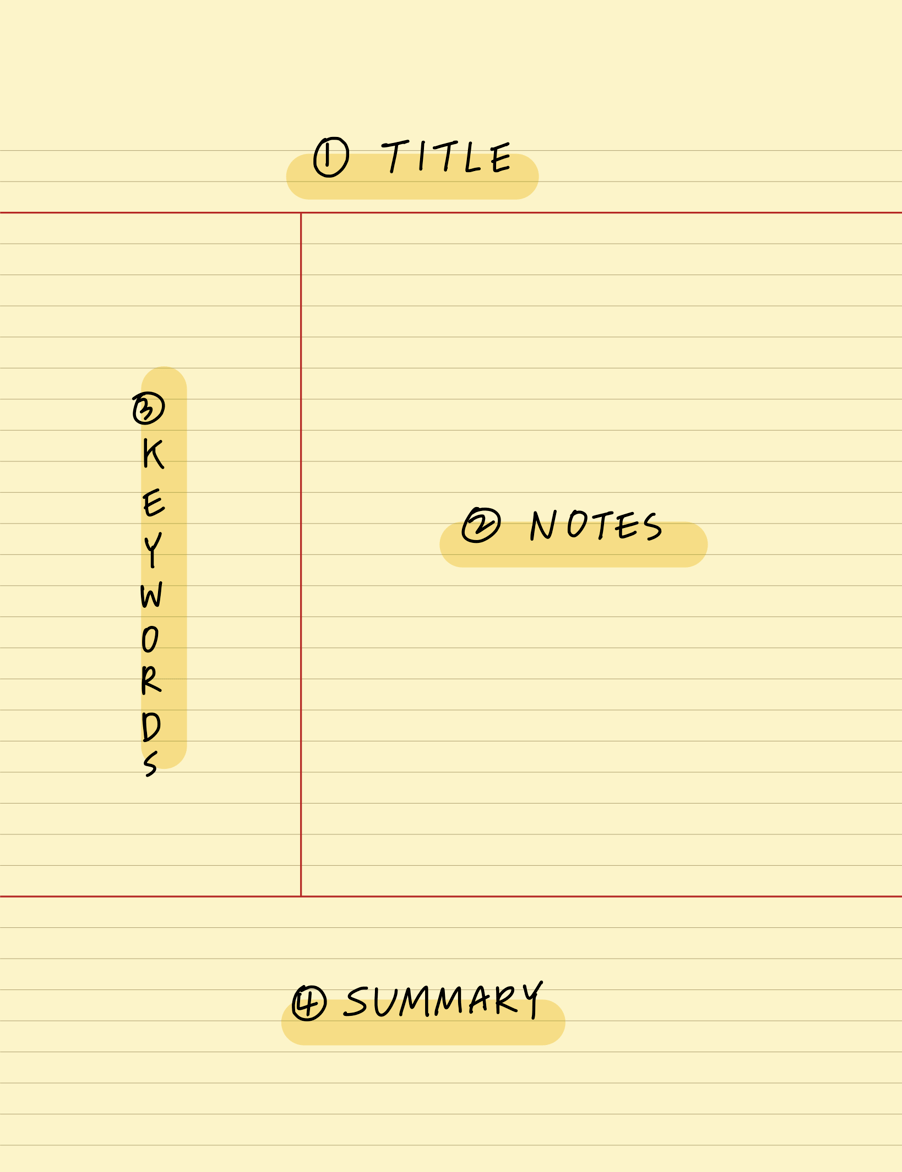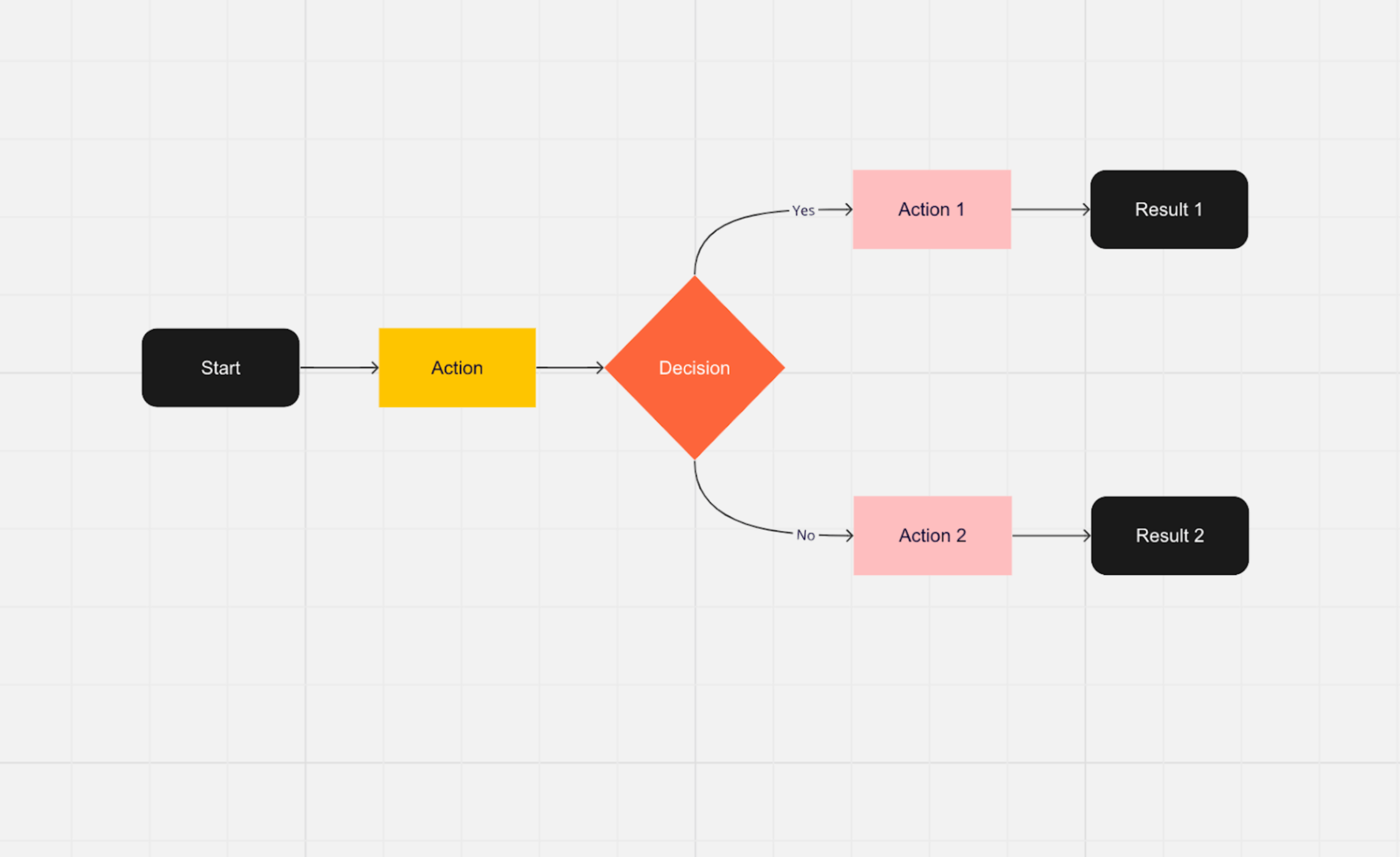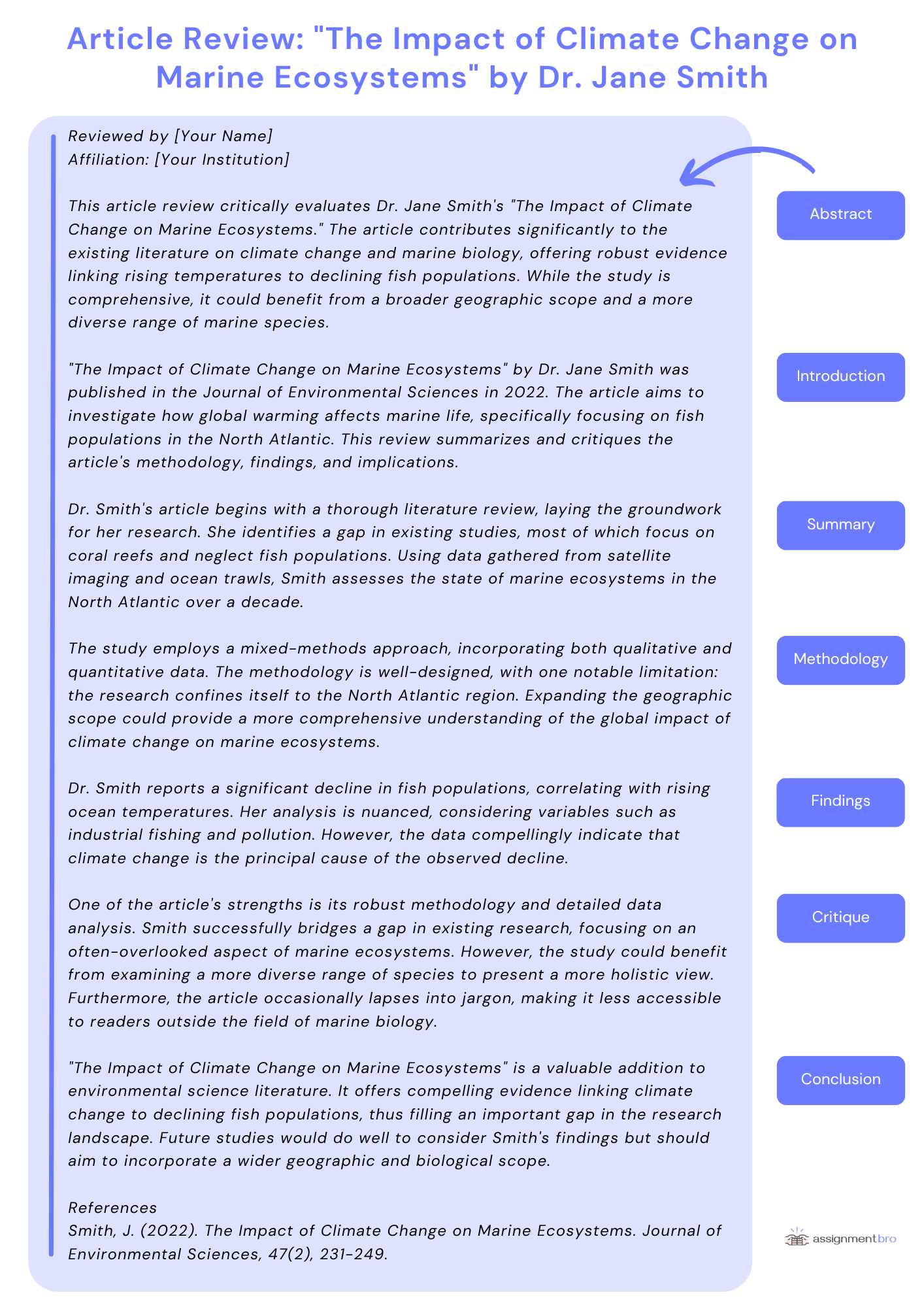How to Write an Article Review: Tips, Tricks, and Best Practices

An article review is a critical evaluation and analysis of a scholarly article. It goes beyond a simple summary, involving examining content, assessing the author’s arguments, and providing insights into its strengths and weaknesses.
Crafting an Insightful Article Review: Everything You Need to Know
Article reviews serve as a bridge between readers and scholarly articles. They help readers understand the article’s key points without diving into the entire piece. But more than that, article reviews offer a critical perspective. They help us gauge the research’s quality, the topic’s relevance, and the findings’ significance. They’re like a filter that helps us identify articles that truly matter in our field of interest. Get help with your request “do my college assignment for me” at AssignmentBro if you have troubles with article review.
When writing an article review, you start by summarizing the article’s main points – the who, what, when, where, and why. Then comes the critical part. You evaluate the article’s content, methodology, and arguments. You ask questions like: Is the research solid? Are the arguments convincing? Does it contribute something new? Your review becomes a thoughtful analysis that informs readers and engages them in a scholarly discussion.
In this blog post, you’ll find effective strategies and a step-by-step guide for analyzing any article.
Your assignment can be completed in 3 hours!
Has your deadline come quicker than you expected? No worries! We have what you need – a 3-hours deadline option! All features available for any other order applied, including:
- 100% original assignment
- Free formatting and reference list
- 24/7 online support
Understanding the Article: The First Step Towards Review
When you’re asked to write an article review, it’s worth thoroughly reviewing the scholarly article and trying to understand it first. Let’s start with the basic tips that will be helpful as you are going through your article:
Identifying Main Arguments and Supporting Evidence
First, skim the title, abstract, headings, and conclusion. This gives you an overview of the article’s main points and structure.
Then, look for the thesis statement – the main argument the author is making. After that, identify topic sentences in each paragraph. These often indicate the paragraph’s main point and help you follow the author’s train of thought.
Also, notice concepts or arguments that are repeated throughout the article. Repetition often signals the author’s key points. It will grant a basic understanding of the article you’re about to review, which makes it a good start. Our assignment writing service can help with article on any subject. So every student can get accounting homework help, geography, hnd, chemistry and marketing assignment help
Leveraging note-taking strategies
Note-taking can greatly enhance your ability to capture and retain information effectively. If you use one of the methods, you’ll have plenty of information to work with once you write a review of an article. Try out some of these methods that have proved to be helpful:
Cornell Method
Divide your note page into three sections: a narrow left column for cues or questions, a wider right column for your main notes, and a bottom section for summarizing the key points. This method encourages you to engage with the material and review your notes later actively.

Source: Flexcil
Flowchart Method
Use arrows and boxes to create a flowchart that illustrates processes, cause-and-effect relationships, or step-by-step procedures. This approach is handy for subjects with sequences or interrelated concepts. You can draw it by hand or use applications such as Miro, using a template you can easily fill.

Source: Miro
Sentence Summaries
Write concise summaries of each paragraph or section in your own words. This method encourages active reading and helps you distill the main ideas.
Article Review vs Article Critique: What’s the Difference?
👀 Article review and article critique are terms often used in academia and research to discuss different ways of evaluating and analyzing scholarly articles. While they may seem similar, they actually have distinct purposes and approaches.
An article review typically involves summarizing a given article’s main points and key arguments. It aims to provide a concise overview of the article’s content, highlighting its main ideas, methodologies, and findings. The review focuses on presenting a clear picture of the article, making it useful for readers who want to quickly understand the article’s main contributions without delving into extensive details. It’s a way to capture the essence of the article and its significance in a condensed manner.
On the other hand, an article critique goes beyond mere summarization. It involves more in-depth analysis and evaluation of the article’s strengths and weaknesses. Article critique examines the quality of the research, the validity of the arguments presented, the soundness of the methodologies employed, and the overall effectiveness of the article in contributing to the field of study. In a critique, the reviewer provides their insights and assessments, highlighting areas where the article could be improved or where further research is needed. It’s a more comprehensive assessment that digs into the nuances of the article’s content and scholarly value, which is why it can be quite challenging to handle ─ turn to article critique assignment help.
In essence, an article review is a brief overview that captures the main points. In contrast, an article critique involves a thorough evaluation that includes analysis and the reviewer’s perspective on the article’s contributions and limitations. Both approaches have their place in academia and research, serving different purposes for readers and researchers.
How to Write an Article Review: Essential Steps
A well-rounded critical analysis provides readers with a thorough understanding of the article’s content, methodology, and scholarly contribution. Let’s dive into each point and discover how to write a comprehensive critical analysis or article review:
Start with a Summary
To do an article review, begin with a concise summary of the article’s main points. Highlight the topic, research question, and key findings. This gives readers a solid foundation before they delve into deeper analysis.
Get Familiar with the Author’s Argument
Clearly state the main argument or thesis the author is presenting. Break down the argument into its components, highlighting how it’s structured and what claims are being made.
Engage With the Evidence
Explore the evidence the author uses to support their argument. Assess the quality and relevance of the cited examples, data, or sources. Are they convincing? Do they provide solid backing for the claims?
Evaluate the Methodology
When you write an article review, examine the research methods employed by the author. Assess whether the chosen methods are appropriate for the research question. Consider the validity and reliability of the data collection and analysis techniques.
Constructive Criticism
Offer criticism where warranted, but make it constructive. Point out weaknesses or gaps in the argument, but support your critique with evidence from the article. Avoid overly negative language and focus on opportunities for improvement. Here are some helpful tips:
- Focus on reviewing the article’s content (argument, evidence, methodology, or clarity of writing). Avoid personal attacks or negative comments.
- Pinpoint the exact aspects you’re critiquing. Use examples or quotes from the article to illustrate your points.
- Maintain an objective and respectful tone throughout your criticism. Include a personal reflection, but avoid overly emotional language or harsh judgments.
- Instead of just pointing out problems, suggest ways the author could improve.
- Position your criticism as opportunities for the author to develop their ideas further or strengthen their argument. Emphasize that your goal is to help enhance the quality of the work.
- Explain why the aspect you’re critiquing is important. How does it affect the overall quality of the article or its contribution to the field?
- Choose words that encourage improvement and learning. Instead of saying, “This is incorrect,” you could say, “Consider refining this section to enhance clarity.”
Offer Insights
Share your insights into the broader significance of the article. Does it contribute to a larger conversation in the field? Does it challenge or expand upon existing theories? Highlight how the article fits into the scholarly landscape.
Contextualize the Article
Provide context by discussing how the article relates to other research in the field. Identify any gaps the article addresses or fills. This contextualization helps readers understand the article’s unique contribution.
Engage in Discussion
Compare the article with other relevant works in the field. Discuss points of agreement, divergence, and any emerging patterns. This discussion adds depth to your analysis and shows your engagement with the subject matter.
Highlight Strengths
Acknowledge the article’s strengths, whether in clear writing, thorough research, or compelling arguments. Recognizing positives helps balance your critique and shows your fair assessment.
Summarize Your Analysis
Conclude your analysis by summarizing your main points. Emphasize the key takeaways from your review, reiterating the article’s strengths, weaknesses, and broader significance.
Ask for help with your assignment at AssignmentBro. Our expert writers can write your assignment for you on time.
How to Write the Summary?
A well-crafted summary should provide readers with a clear understanding of the article’s main points, even if they haven’t read the full piece. By distilling complex ideas into a concise format, you’re making the article’s content accessible and digestible for a wider audience.
A concise summary of an article’s main points requires a blend of careful reading and effective communication. Here’s how to create a summary that captures the essence of the article:
1. Identify Key Elements.
Start by identifying the article’s main elements – the topic, research question, thesis, and key findings. These elements form the backbone of your summary.
2. Focus on Central Ideas.
Center your summary on the article’s central ideas. What is the core argument the author is presenting? Highlight the primary concepts that support this argument.
3. Trim Unnecessary Details.
While reading, be mindful of details that contribute to the overall understanding and those that can be omitted. Stick to the essential information that encapsulates the article’s essence.
4. Use Your Own Words.
Paraphrase the author’s points using your own words. This demonstrates your comprehension and helps create a more concise summary.
5. Prioritize Structure.
Maintain the article’s structure in your summary. Summarize each section or major point logically, following the article’s flow.
6. Be Objective.
Present the author’s points objectively without adding your interpretation or analysis. Focus on conveying what the author is saying.
Here are some extra tips to enhance your skills in writing concise and clear summaries:
- While reading the article, jot down questions that capture the core of each section. Then, when writing the summary, answer these questions succinctly. It keeps you focused on the main ideas.
- When summarizing, prioritize the “why” and “how” behind the author’s arguments. Why is this topic important? How does the author support their claims? This adds depth to your summary.
- While context is important, omit lengthy background explanations that aren’t directly tied to the article’s main points. Focus on the content that drives the author’s argument.
- If the article introduces key terms or concepts, ensure your summary includes these definitions. They provide essential context for understanding the rest of the article.
- Ask for help our assignment writing service if you need assistance with your task.
Article Review Example

This is a simplified example, and academic requirements may vary depending on your institution or field of study. Always be sure to follow any guidelines provided by your instructor or the journal to which you are submitting the review.
Wrapping Up
From understanding the article’s main arguments to providing constructive criticism, each stage of the article review plays a crucial role in crafting a thoughtful and insightful review.
Now, armed with these strategies, it’s time for you to put them into action. Take what you’ve learned and dive into the world of writing an article review. Practice makes perfect, and as you engage with more articles, your skills will sharpen, your insights will deepen, and your ability to contribute to scholarly discussions will grow.


 Log In
Log In
